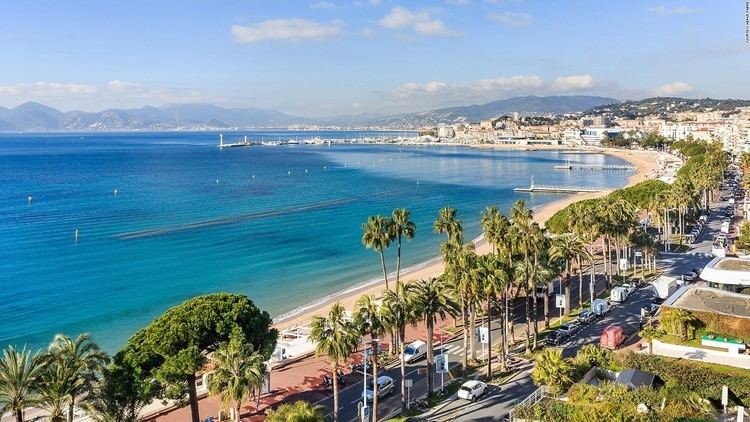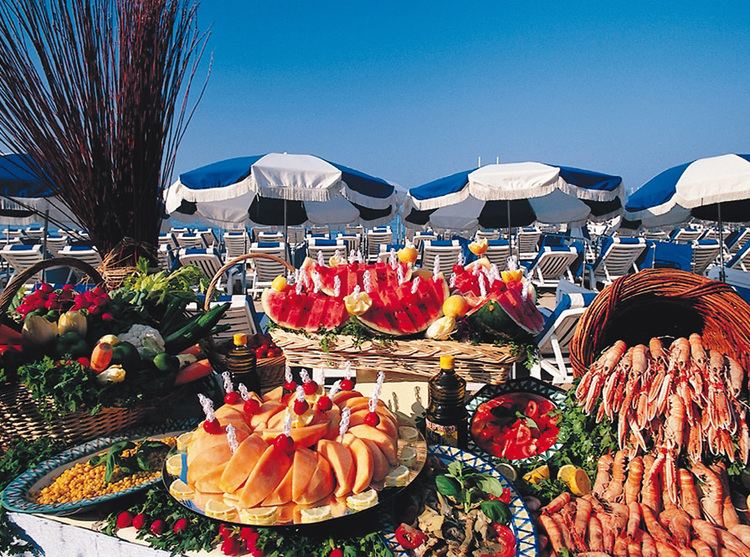Country Founded 1530 Area 73,603 | Region Provence-Alpes-Cote dAzur Mayor David Lisnard UMP | |
Points of interest French Riviera, Promenade de la Croisette, Lerins Islands, Cannes Film Festival, Hotel Majestic Barriere | ||

Cannes ( in Occitan Canas) is a city located on the French Riviera. It is a commune of France located in the Alpes-Maritimes department, a busy tourist destination and host of the annual Cannes Film Festival, Midem, and Cannes Lions International Festival of Creativity.
Contents
- Map of Cannes
- Amazing things to do in cannes for tourists
- History
- Economy
- Landmarks
- Museums
- Festivals and show events
- Cannes cuisine
- Making of cannes 2013 ft wines of brasil and sorted food
- References
Map of Cannes
The city is famous for its luxury hotels and restaurants. On 3 November 2011 it played host to the G20 organisation of industrialised nations.
Amazing things to do in cannes for tourists
History
By the 2nd century BC the Ligurian Oxybii established a settlement here known as Aegitna . Historians are unsure what the name means. The area was a fishing village used as a port of call between the Lerins Islands.
In 69 AD it became the scene of violent conflict between the troops of Otho and Vitellius.
In the 10th century the town was known as Canua. The name may derive from "canna," a reed. Canua was probably the site of a small Ligurian port, and later a Roman outpost on Le Suquet hill, suggested by Roman tombs discovered here. Le Suquet housed an 11th-century tower which overlooked swamps where the city now stands. Most of the ancient activity, especially protection, was on the Lerins Islands and the history of Cannes is closely tied to the history of the islands.
An attack by the Saracens in 891, who remained until the end of the 10th century, devastated the country around Canua. The insecurity of the Lerins islands forced the monks to settle on the mainland, at the Suquet. Construction of a castle in 1035 fortified the city by then known as Cannes, and at the end of the 11th century construction was started on two towers on the Lerins islands. One took a century to build, the other, three centuries.
Around 1530 Cannes detached from the monks who had controlled the city for hundreds of years and became independent.
During the 18th century, both the Spanish and British tried to gain control of the Lerins Islands but were chased away by the French. The islands were later controlled by many, such as Jean-Honore Alziary, and the Bishop of Frejus. They had many different purposes: at the end of the 19th century, one served as hospital for soldiers wounded in the Crimean War.
Henry Brougham, 1st Baron Brougham and Vaux bought land at the Croix des Gardes and constructed the villa Eleonore-Louise. His work to improve living conditions attracted the English aristocracy, who also built winter residences.
At the end of the 19th century, several railways were completed, which prompted the arrival of streetcars. In Cannes, projects such as the Boulevard Carnot and the rue dAntibes were carried out. After the closure of the Casino des Fleurs (hotel Gallia), a luxury establishment was built for the rich winter clientele, the Casino Municipal next to the pier Albert-Edouard. This casino was demolished and replaced by the new Palace in 1979.
In the 20th century new luxury hotels such as the Carlton, Majestic, Martinez, and JW Marriott Cannes were built. The city was modernised with a sports centre, a post office, and schools. There were fewer British and German tourists after the First World War but more Americans. Winter tourism gave way to summer tourism and the summer casino at the Palm Beach was constructed.
The city council had the idea of starting an international film festival shortly before World War II. The first opened on 20 September 1946, held in the Casino Municipal.
Economy
The area around Cannes has developed into a high-tech cluster. The technopolis of Sophia Antipolis lies in the hills beyond Cannes. The Film Festival is a major event for the industry. There is an annual television festival in the last week in September.
Landmarks
The Promenade de la Croisette is the waterfront avenue with palm trees. La Croisette is known for picturesque beaches, restaurants, cafes and boutiques. Le Suquet, the old town, provides a good view of La Croisette. The fortified tower and Chapel of St Anne house the Musee de la Castre. A distinctive building in Cannes is the Russian Orthodox church.
Museums
The Musee dArt et dHistoire de Provence houses artifacts from prehistoric to present, in an 18th-century mansion. The Musee de la Castre has objects from the Pacific Atolls, Peruvian relics and Mayan pottery. Other venues include the Musee de la Marine, Musee de la Mer, Musee de la Photographie and Musee International de la Parfumerie.
Festivals and show events
Cannes cuisine

The cuisine of Provence is the result of the warm, dry Mediterranean climate; the rugged landscape, good for grazing sheep and goats but, outside of the Rhone Valley, with poor soil for large-scale agriculture; and the abundant seafood on the coast. The basic ingredients are olives and olive oil; garlic; sardines, rockfish, sea urchins and octopus; lamb and goat; chickpeas; local fruits, such as grapes, peaches, apricots, strawberries, cherries, and the famous melons of Cavaillon.
Making of cannes 2013 ft wines of brasil and sorted food
The fish frequently found on menus in Provence are the rouget, a small red fish usually eaten grilled, and the loup, (known elsewhere in France as the bar), often grilled with fennel over the wood of grapevines.
